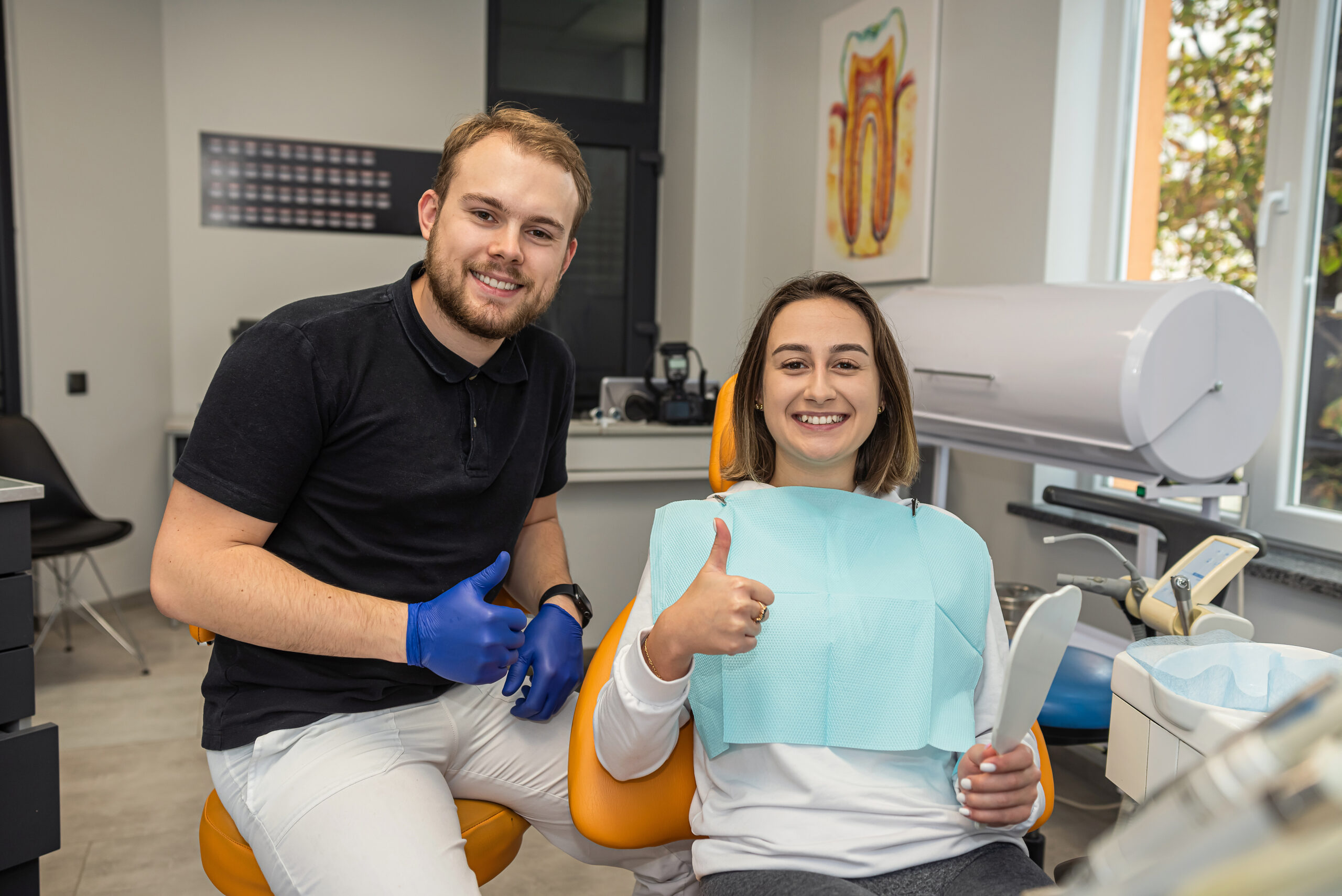(703) 372-5665
Is Alveolitis Dental Dangerous? Understanding Dry Socket and Its Risks

Is Alveolitis Dental Dangerous? Understanding Dry Socket and Its Risks
Meet Dr. Samer Khattab
Dr. Samer Khattab has almost 20 years of experience in dentistry. He earned his first degree – a Bachelor of Dental Surgery – in 1997 from the University of Baghdad School of Dentistry. After moving to the United States, he was accepted into the prestigious University Of Michigan where he earned his second degree.
Dr. Samer Khattab is very passionate about dentistry. He believes “by improving people’s smiles, you can improve their lives.” Also, he believes strongly in continuing education to further his skills and techniques, always aspiring to achieve clinical excellence in his day-to-day practice. Dr. Khattab focuses on adult complex restorations, esthetics, and dental implants as part of his continuing dental education.
Introduction
Navigating the aftermath of a tooth extraction can be daunting, especially if you encounter complications like dry sockets. This common yet often misunderstood condition can cause significant discomfort and delay the healing process if not properly addressed. In this comprehensive guide, Dr. Samer Khattab, a Platinum Invisalign Provider, sheds light on the symptoms and causes of dry sockets, offering invaluable recovery tips to alleviate pain and promote healing. From understanding the risks associated with alveolitis dental to implementing effective care strategies, this post is your go-to resource for ensuring a smooth recovery. Join us as we explore professional insights and discover how to manage dry sockets effectively under the guidance of Dr. Samer Khattab.
Understanding Dry Socket
This section delves into what a dry socket is, how it manifests, and what causes it. Dry socket care tips by Dr. Samer Khattab can help you understand these fundamentals, which are crucial for recognizing the condition early and seeking appropriate care.
What is a Dry Socket?
Dry socket, or alveolar osteitis, is a painful dental condition that can occur after a tooth extraction. When a tooth is removed, a blood clot forms in the socket to protect the bone and nerves underneath. However, sometimes, this clot dislodges or dissolves before the wound heals, exposing the bone and nerves to air and food. This exposure leads to intense pain and can prolong the healing process. Discover symptoms with Dr. Samer Khattab to identify dry sockets early and seek timely care.
Patients often report a dull throbbing pain that radiates to the ear, eye, or neck on the same side as the extraction. The condition typically manifests two to four days after the extraction, and patients may notice an unpleasant taste or odor in their mouth.
Discover Symptoms with Dr. Samer Khattab
Discovering the symptoms of dry sockets is crucial for early intervention. According to Dr. Samer Khattab, the primary symptom is severe pain that worsens rather than improves after a tooth extraction. Patients often describe the pain as more intense than typical post-extraction discomfort. Get recovery tips from Dr. Samer Khattab to manage symptoms effectively and support proper healing.
Other symptoms may include visible bone in the socket area, bad breath, or an unpleasant taste in the mouth. Swelling and a lack of blood clots in the socket are also common indicators. These symptoms are often accompanied by general discomfort in the surrounding areas, including the jaw and ear.
Dr. Khattab emphasizes the importance of early detection. If you experience any of these symptoms, it’s essential to contact your healthcare provider to prevent further complications and facilitate proper healing.
Learn the Causes from Dr. Samer Khattab
Understanding the causes of dry sockets can help in preventing this painful condition. Dr. Samer Khattab explains that several factors can contribute to developing a dry socket. The most common cause is the premature loss of the blood clot that forms post-extraction. Learn the causes from Dr. Samer Khattab to take preventive steps and reduce your risk.
Smoking and tobacco use are significant risk factors, as they can impede healing and dislodge the clot. Poor oral hygiene and vigorous rinsing or spitting after surgery can also disrupt clot formation. Additionally, certain medications and hormonal changes may increase susceptibility.
Risks Associated with Dry Socket
Examining the risks related to dry sockets is essential for understanding the potential complications that can arise if the condition is left untreated. This section highlights these risks and offers insights into their implications. Find care advice from Dr. Samer Khattab to better manage and avoid these complications.
Potential Complications
A dry socket can lead to several complications if not treated promptly. The most immediate risk is severe pain, which can significantly impact daily activities and overall quality of life. This pain often requires professional intervention to manage effectively.
In addition to pain, dry sockets can prolong the healing process, increasing the risk of infection. The open socket becomes susceptible to bacterial invasion, potentially leading to further oral health issues. Secondary infections can cause additional swelling, redness, and pus formation.
Dr. Khattab points out that complications are rare but can have lasting effects on oral health. Prompt treatment reduces these risks and helps maintain a healthy recovery trajectory.
Is Alveolitis Dental Dangerous?
Whether alveolitis dental is dangerous depends on the severity and response time to treatment. Alveolitis dental, or dry socket, is not typically life-threatening but can cause significant discomfort and complications if ignored.
Dr. Samer Khattab, a Platinum Invisalign Provider, emphasizes that the real danger lies in untreated cases, which can lead to chronic pain and infection. The condition can also impact future dental procedures, as prolonged healing may alter the structure and health of surrounding tissues.
In conclusion, while not inherently dangerous, alveolitis dental requires careful attention and timely intervention to mitigate potential risks. Early recognition and treatment are key to preventing complications.
Prevention and Care
Preventative measures and proper care are vital in managing dry sockets. This section offers practical tips and advice from Dr. Samer Khattab on preventing and managing this condition effectively. Understanding alveolitis dental symptoms with Dr. Samer Khattab can also help you take action before complications arise. For more information on dry sockets, check this article.
Dry Socket Care Tips by Dr. Samer Khattab
Preventing dry sockets involves several key strategies, as outlined by Dr Samer Khattab. Following these guidelines can significantly reduce the risk of developing this painful condition and ensure a smoother recovery.
- Avoid Smoking: Smoking can dislodge the blood clot and delay healing. Refrain from smoking for at least 48 hours post-extraction.
- Follow Post-Op Instructions: Adhere to your dentist’s care instructions, including dietary restrictions and oral hygiene practices.
- Gentle Rinsing: Use a mild saltwater rinse after meals to keep the area clean without disturbing the clot.
By implementing these tips, patients can minimize the likelihood of complications and promote effective healing.
Find Care Advice from Dr. Samer Khattab
Dr. Samer Khattab provides essential advice for those recovering from tooth extractions. His recommendations focus on promoting healing while preventing dry sockets, ensuring optimal recovery outcomes.
- Rest and Recover: Allow your body time to heal by resting adequately after the procedure.
- Hydration: Stay hydrated to aid the healing process, but avoid using straws that can disrupt the clot.
- Pain Management: Use prescribed medications as directed to manage pain without compromising the healing socket.
- Oral Hygiene: Maintain good oral hygiene by brushing gently and avoiding the extraction site.
Dr. Khattab stresses the importance of following these care instructions to prevent dry socket and ensure a smooth recovery.
Recovery and Treatment
Understanding recovery and treatment options is crucial for managing dry sockets effectively. This section explores various approaches and offers professional recovery tips from Dr. Samer Khattab. Recovery from alveolitis dental Dr. Samer Khattab’s advice can guide you toward a smoother and more comfortable healing process.
Get Recovery Tips by Dr. Samer Khattab
Recovery from dry sockets requires a combination of professional care and self-management. Dr. Samer Khattab shares professional tips to facilitate healing and alleviate discomfort.
- Professional Cleaning: Visit your dentist for cleaning and dressing changes if necessary. This helps reduce pain and prevent infection.
- Pain Relief: Use over-the-counter pain medications or those your dentist prescribes to manage discomfort.
- Follow-up Care: Attend all scheduled follow-up appointments to monitor healing and address complications.
- Self-Care Practices: Continue with gentle rinses and avoid behaviors that may dislodge the clot.
These recovery tips ensure a smooth healing process and prevent further complications.
Long-Term Impact If Left Untreated
If ignored, dry sockets may lead to chronic pain, bone exposure, and, in rare cases, infection spreading to nearby tissues. Although not a permanent condition, the lingering effects can affect your ability to eat, sleep, and speak comfortably. That’s why it’s essential not to downplay persistent pain after a tooth extraction—especially when it worsens instead of getting better.
Frequently Asked Questions
1. How can I tell if I have a dry socket?
Severe pain after extraction, visible bone, bad breath, or a bitter taste may indicate a dry socket. Contact your dentist if you notice these signs.
2. How can I prevent a dry socket?
Avoid smoking, don’t use straws, eat soft foods, and rinse gently with saltwater. Follow your dentist’s post-op instructions closely.
3. Is dry socket serious?
Yes—it’s painful and can delay healing. See your dentist promptly to ease pain and avoid complications.
Conclusion
In summary, a dry socket is a common complication following tooth extraction. Still, it can be managed with the right approach and guidance. Dr. Samer Khattab’s insights emphasize the importance of early detection, understanding the symptoms and causes, and following preventative care strategies. By staying informed and taking proactive steps, you can navigate the recovery process smoothly and maintain optimal oral health. Discover symptoms with Dr. Samer Khattab, and don’t hesitate to contact your dentist for professional advice and treatment.
Remember: Dry socket, or alveolitis, is painful but manageable when treated early. Recognizing symptoms quickly is key to a smooth recovery.
Disclaimer: This blog is for informational purposes only and does not replace professional dental advice. Always consult your dentist for proper diagnosis and care.






